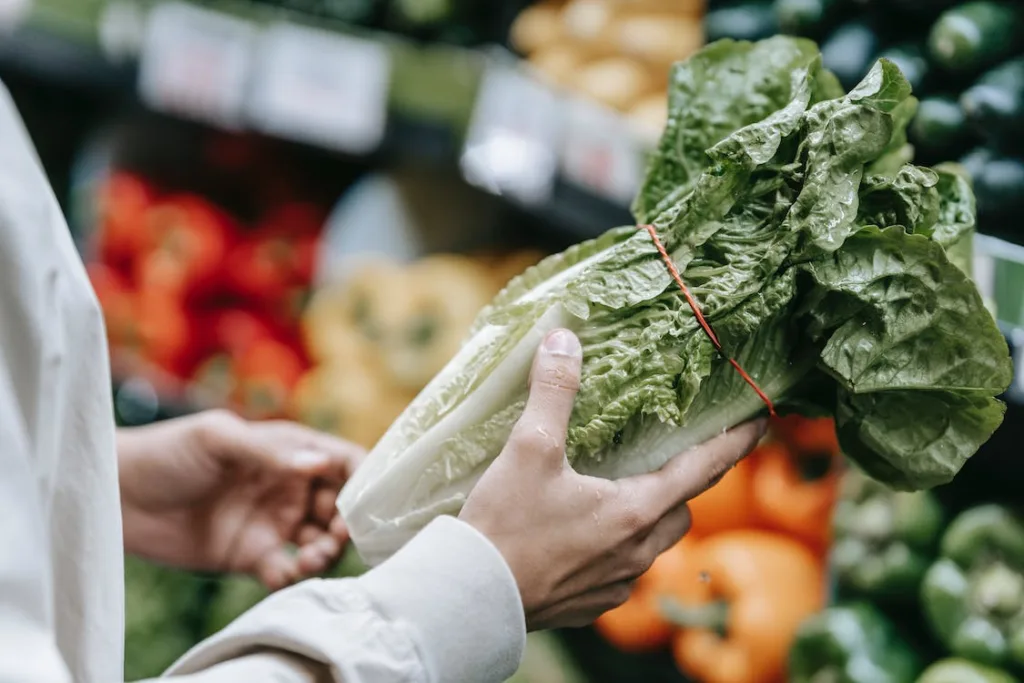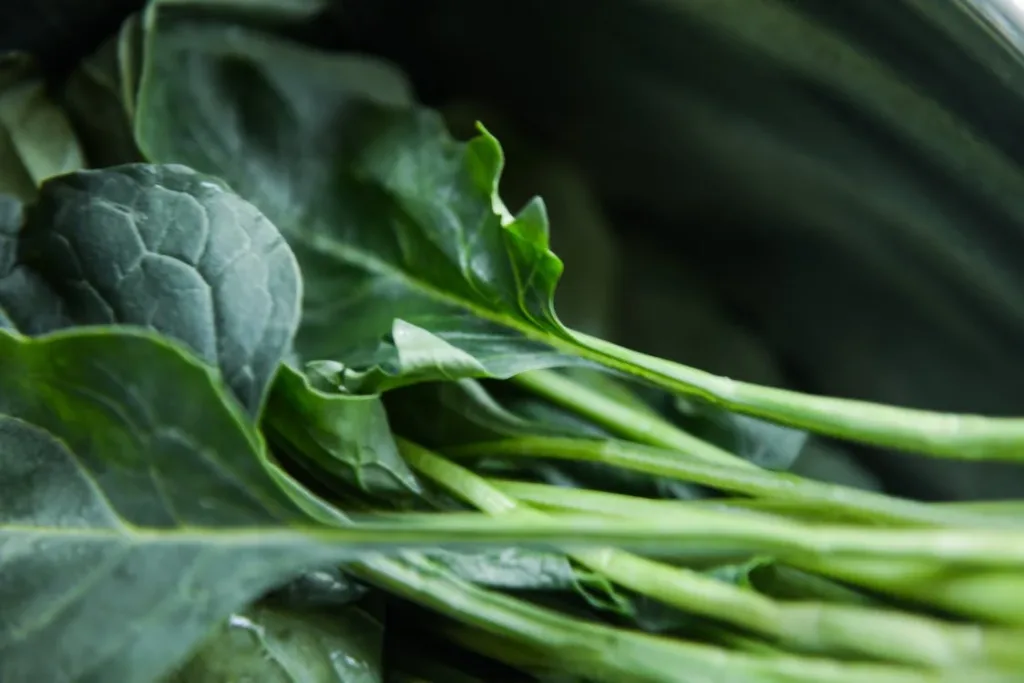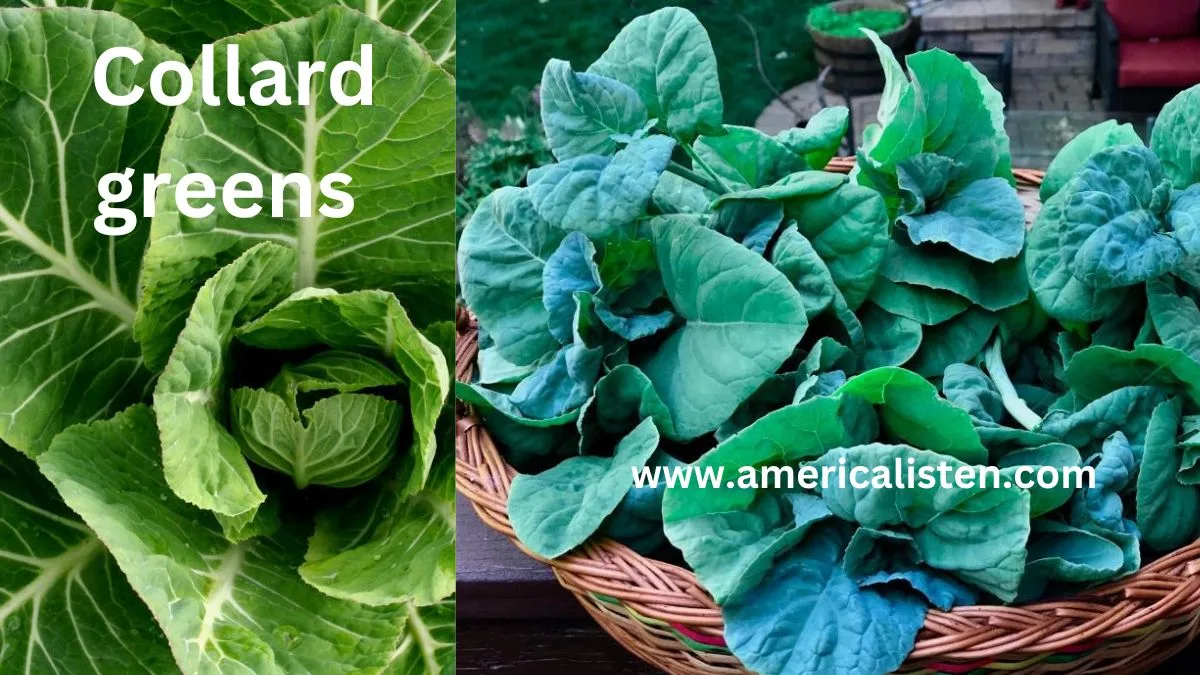The Superfood You’re Missing Out On – Collard Greens’ Astonishing Health Benefits!
Collard Greens and Their Health Benefits
Collard greens have long been a cherished staple in Southern cuisine, but their appeal has transcended regional boundaries due to their remarkable health benefits and versatility in cooking. From hearty stews to nutrient-rich salads and wraps, collard greens have found their place in various culinary traditions. In this article, we’ll explore what collard greens are, their health benefits, and six different ways to prepare them, along with some recipe ideas, including Chef Thomas Keller’s Braised Greens recipe.
What Are Collard Greens?
Collard greens, scientifically known as Brassica oleracea, belong to the cabbage family. These leafy greens are characterized by their dark green leaves and sturdy stems. Collard greens have a unique flavor profile that falls somewhere between cabbage and hearty kale, reminiscent of Swiss chard. They have traditionally been a fundamental ingredient in Southern cooking, often featured in braised dishes and stews. More recently, collard greens have gained popularity in health-conscious diets as they can be used in various forms, including raw in salads and as gluten-free wraps.

Health Benefits of Collard Greens
Collard greens are a nutritional powerhouse, particularly rich in chlorophyll, which imparts a vibrant green color to the leaves and is associated with numerous health benefits. Here are some of the key advantages of incorporating collard greens into your diet:
1. Nutrient-Rich:
Collard greens are high in important vitamins and minerals. They are a great source of vitamins A, C, E, and K, all of which contribute to overall health and well-being.
2. Bone Health:
The high vitamin K content in collard greens plays a crucial role in bone health by aiding in calcium absorption and bone mineralization.
3. Iron and Calcium:
Collard greens are rich in iron, which is essential for the formation of red blood cells and the transport of oxygen throughout the body. They also contain calcium, promoting strong bones and teeth.
4. Fiber:
Collard greens are an excellent source of dietary fiber, aiding in digestion and promoting a feeling of fullness, which can help with weight management.

5. Antioxidants:
These greens are loaded with antioxidants that combat oxidative stress and inflammation, potentially reducing the risk of chronic diseases.
6 Ways to Prepare Collard Greens
Collard greens can be prepared in several ways to suit various culinary preferences. Here are six common methods:
1. For Salads:
- Remove the tough stems, stack the leaves, and slice them into ribbons. Use these ribbons as a base for fresh salads.
2. For Wraps:
- After removing the stems, use collard leaves as a gluten-free and low-calorie alternative to traditional wraps. Fill them with your choice of ingredients and roll them up.
3. Sautéed:
- Cut collard greens into pieces, blanch them, and then sauté them in butter and olive oil with garlic, salt, and pepper for a flavorful side dish.
4. Steamed:
- Steam collard greens with minced garlic for a simple and healthy side. This approach keeps their brilliant color and nutrients intact.
5. Blanched:
- Blanching involves briefly boiling the greens and then cooling them. Blanched collard greens can be stored for later use in various dishes.
6. Stewed:
- Simmer collard greens in broth until tender, creating a hearty and comforting side dish.
11 Collard Greens Recipe Ideas
If you’re looking for inspiration on how to incorporate collard greens into your meals, here are 11 delightful recipe ideas:
- Creamed Collard Greens: Create a creamy side dish by cooking shredded collard greens in a rich cream sauce, finished with a sprinkle of nutmeg.
- Biscuits With Collard Greens: Elevate your breakfast by adding braised collard greens to your egg biscuit sandwiches.
- Shredded Collard Green Salad With Sweet Potatoes: Combine raw collard greens with roasted sweet potatoes and goat cheese for a hearty salad.
- Collard Greens With Ham and Bacon: Prepare classic Southern collard greens by stewing them with ham and bacon for added flavor.
- Rainbow Collard Green Spring Rolls: Make healthy veggie wraps by filling collard greens with julienned vegetables and tofu, served with a spicy-sweet peanut dipping sauce.
- Black-Eyed Pea Soup: Create a comforting soup by simmering black-eyed peas, collard greens, vegetables, and ham in chicken broth.
- Stir-Fried Collards: Cut collard greens into strips and sauté them with onion and garlic for a quick and flavorful side dish.
- Italian Risotto with Collard Pesto: Enhance your risotto with a pesto made from collard greens and sundried tomatoes, mixed with creamy Arborio rice and field peas.
- Turkey Black Bean Chili: Incorporate collard greens into chili by chopping them into ribbons and combining them with ground turkey, black beans, and vegetables.
- Brazilian Collards: Sauté thinly sliced collard greens with garlic and olive oil for a simple Brazilian-inspired side dish.
- Ethiopian-Spiced Collards: Infuse collard greens with aromatic spices like paprika, allspice, cardamom, and cumin, finished with white wine vinegar for an Ethiopian-inspired twist.
Collard greens are not only tasty but also extremely healthful.. With their wide range of culinary applications and health benefits, they are a valuable addition to any diet. Whether you enjoy them in traditional Southern dishes or explore innovative recipes, collard greens are a versatile and wholesome choice for your meals.
” How to Prepare and Cook These Super Greens for Maximum Flavor and Health Benefits”
Collard greens can be prepared in various ways, depending on your culinary preferences. Here’s a basic guide on how to prepare collard greens:
Ingredients:
Collard greens (as many as you need)
Water
Salt (optional)
Olive oil or butter (optional, for sautéing)
Garlic (optional, for added flavor)
Instructions:
Wash the Collard Greens: Start by washing the collard greens thoroughly under cold running water. This helps remove any dirt or debris.
Remove the Stems: Hold a collard green leaf upside down, so the stem side is facing up. With a sharp knife, carefully cut along the stem to remove it. The stems are often tough and fibrous and can take longer to cook, so removing them makes the greens more tender.
Stack and Roll: Once you’ve removed the stems, stack several collard green leaves on top of each other. Roll them into a tight bundle, similar to rolling a cigar.
Slice or Chop: Slice the rolled collard greens crosswise into thin strips for a finer texture. Alternatively, you can chop them into larger pieces if you prefer a heartier texture.
Cooking Methods:
Sautéed Collard Greens: Heat a skillet over medium heat. Add a bit of olive oil or butter and minced garlic if you like. Once the oil is hot, add the collard greens and sauté for 5-7 minutes until they’re tender and slightly wilted.
Steamed Collard Greens: Place the sliced collard greens in a steamer basket over boiling water. Cover and steam for about 5-7 minutes until they’re tender but still vibrant green.
Blanched Collard Greens: Boil a pot of water and prepare a bowl of ice water. Submerge the collard greens in the boiling water for about 2-3 minutes, then quickly transfer them to the ice water to stop the cooking process. This method helps retain their bright color and nutrients. You can blanch them ahead of time and use them in various dishes.
Stewed Collard Greens: Add collard greens to a pot with broth or water, along with seasonings of your choice (e.g., onions, garlic, ham hocks, bacon). Simmer for 20-30 minutes or until they’re tender and flavorful.
Season to Taste: Regardless of your chosen cooking method, you can season collard greens with salt, pepper, and other spices or seasonings to taste.
Remember that collard greens can be quite versatile, so feel free to experiment with different flavors and cooking techniques to suit your preferences. They’re a healthy and nutritious addition to your meals.
Pickled Collard Greens Recipe
Creating pickled collard greens is a flavorful and tangy way to preserve and enjoy this nutritious green vegetable. Here’s a simple recipe for pickled collard greens:
This picture is property of food forthesoul00 under link achar/https://foodforthesoul00.com/2020/11/21/kashmiri-achar/
Ingredients:
1 bunch of collard greens
2 cups white vinegar
1 cup water
1/2 cup granulated sugar
2 tablespoons salt
1 teaspoon black peppercorns
1 teaspoon red pepper flakes (adjust to taste for spiciness)
2 cloves garlic, peeled and sliced
Optional: additional spices like mustard seeds, coriander seeds, or bay leaves for extra flavor
Instructions:
Prepare the Collard Greens:
Wash the collard greens thoroughly under cold running water to remove any dirt or debris.
Remove the tough stems from the collard greens and discard them. You’ll be using the leafy parts for pickling.
Blanch the Collard Greens:
Bring a large pot of water to a boil and prepare a large bowl of ice water.
Submerge the collard greens in the boiling water for about 1-2 minutes until they turn bright green.
Quickly transfer the blanched collard greens to the ice water to cool and retain their vibrant color.
Drain the collard greens and pat them dry with a clean kitchen towel or paper towels.
Pack the Jars:
Sterilize glass canning jars and lids by boiling them in water or running them through a dishwasher.
Pack the collard greens into the sterilized jars, leaving some headspace at the top.
Prepare the Pickling Liquid:
In a saucepan, combine the white vinegar, water, sugar, salt, black peppercorns, red pepper flakes, and garlic.
If you’re using additional spices like mustard seeds, coriander seeds, or bay leaves, add them to the mixture as well.
Heat the mixture over medium heat, stirring occasionally, until the sugar and salt are completely dissolved. Bring it to a gentle boil and simmer for a few minutes.
Pour the Pickling Liquid Over Collard Greens:
Carefully pour the hot pickling liquid over the collard greens in the jars, ensuring that they are completely submerged.
Leave about 1/2 inch of headspace at the top of the jar.
Seal the Jars:
Wipe the jar rims with a clean, damp cloth to remove any residue.
Place the sterilized lids on the jars and screw on the bands until they are fingertip-tight.
Cool and Store:
Allow the jars to cool to room temperature on the counter.
Once cooled, store the pickled collard greens in the refrigerator for at least a week to develop the flavors before enjoying them.
Pickled collard greens can be a delicious addition to sandwiches, salads, or as a tangy side dish. Enjoy the unique flavor and preservation of this Southern-inspired treat!
To know more about collard Please click here
You Might Also Like :
A Singular Ally: Why Muslim-Majority Azerbaijan Stands Alone with Israel ?
Pahalgam Terror Attack: NIA Probe Exposes Lashkar-ISI Nexus, Unveils 3D Mapping Insights



